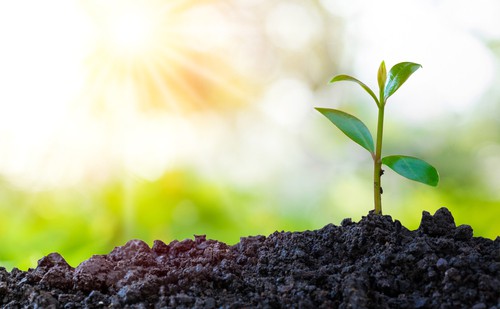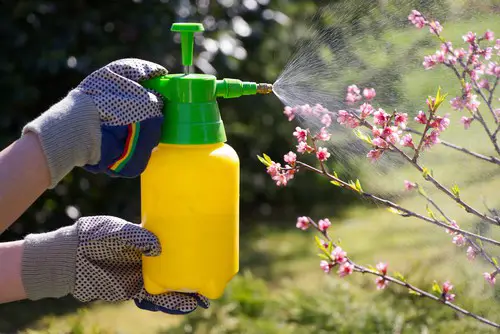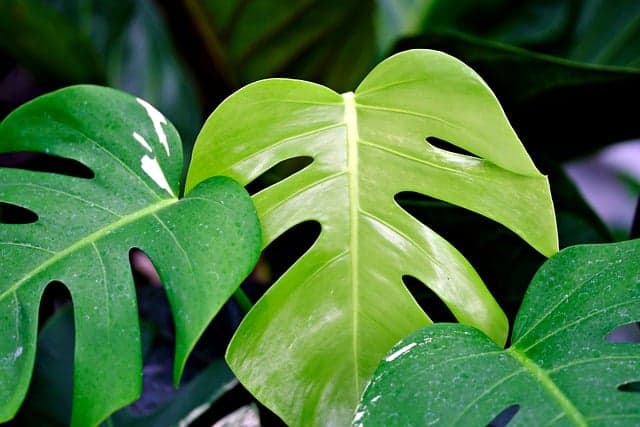Monstera plants are a popular choice for indoor gardeners due to their unique foliage and low-maintenance requirements. However, brown spots on new monstera leaves can be concerning for plant owners. These spots can be caused by a variety of factors, including overwatering, pests, or too much sunlight.
Identifying brown spots on monstera leaves is the first step in addressing the issue. These spots may appear as small or large, depending on the cause.
In some cases, the spots may be accompanied by other symptoms, such as yellowing or wilting leaves. It is important to determine the underlying cause of the brown spots to properly treat the plant.
There are several causes of brown spots on monstera leaves, including overwatering, pests, and too much sunlight. Prevention and care for brown spots can include adjusting the watering schedule, using appropriate fertilizers, and providing optimal lighting conditions.
Treatment of brown spots on monstera leaves can involve removing affected leaves, applying fungicides or pesticides, or adjusting the plant’s environment. Understanding the monstera plant and its needs is crucial in maintaining a healthy and thriving plant.
Key Takeaways
- Identifying the underlying cause of brown spots on monstera leaves is crucial in addressing the issue.
- Prevention and care for brown spots can include adjusting watering schedules and providing optimal lighting conditions.
- Treatment of brown spots on monstera leaves can involve removing affected leaves, applying fungicides or pesticides, or adjusting the plant’s environment.
Other popular posts:
Identifying Brown Spots on Monstera Leaves

Monstera plants are known for their beautiful and distinctive foliage, but brown spots on their leaves can be a sign of trouble. Identifying the cause of the brown spots is important in order to treat the plant effectively and prevent further damage.
In this section, we will discuss the different types of brown spots that can appear on Monstera leaves and the signs and symptoms to look out for.
Types of Brown Spots
There are several types of brown spots that can appear on Monstera leaves, each with its own potential cause. Some common types of brown spots include:
- Leaf spot diseases: caused by fungal or bacterial infections, these spots are often circular and can be yellow, brown, or black in color.
- Scorching: caused by too much direct sunlight, scorching can cause brown spots that are often dry and crispy.
- Pest infestation: some pests, such as spider mites or scale insects, can cause brown spots on Monstera leaves.
- Rust: caused by a fungal infection, rust can cause brown spots with a powdery texture.
Signs and Symptoms
In addition to the types of brown spots, there are also several signs and symptoms to look out for when identifying brown spots on Monstera leaves. These can include:
- Discoloration: brown spots may appear on the leaves, or the entire leaf may turn brown.
- Dark spots: some brown spots may be darker than others, and may be circular or irregular in shape.
- Brown leaves: if the entire leaf is brown, it may be a sign of a more serious problem.
- Yellow halo: some brown spots may have a yellow halo around them, which can be a sign of a bacterial infection.
If you notice brown spots on your Monstera leaves, it is important to identify the cause and take action to treat the plant. This may involve adjusting the plant’s lighting or watering, treating for pests or diseases, or removing damaged leaves.
By taking care of your Monstera plant, you can help ensure that it stays healthy and beautiful for years to come.
Brown Spots on New Monstera Leaves – 5 Common Problems
Monstera plants are known for their large, glossy, and vibrant green leaves. However, brown spots on the leaves can be a sign of various issues that the plant is facing. In this section, we will discuss the most common causes of brown spots on Monstera leaves.
1. Watering Issues

Improper watering is one of the most common causes of brown spots on Monstera leaves. Overwatering can lead to root rot, which can cause the leaves to turn yellow and develop brown spots.
On the other hand, underwatering can cause the leaves to dry out and develop brown edges and spots. It is important to water Monstera plants only when the top inch of the soil is dry to the touch.
2. Light and Temperature Factors
Monstera plants require bright, indirect light to thrive. If they are exposed to direct sunlight, the leaves can get sunburned and develop brown spots. Additionally, extreme temperature changes can also cause brown spots on the leaves. Monstera plants prefer temperatures between 65-85°F (18-29°C).
3. Humidity and Environment
Monstera plants require high humidity levels to thrive. Low humidity levels can cause the leaves to dry out and develop brown spots. It is recommended to keep the humidity levels between 60-80%.
Additionally, Monstera plants are sensitive to environmental changes. Exposure to cold drafts or sudden changes in temperature can cause brown spots on the leaves.
4. Pests and Diseases
Brown spots on Monstera leaves can also be a sign of pest infestation or disease. Fungal diseases like leaf spot can cause brown spots on the leaves. Bacterial infections can also cause brown spots, which can spread rapidly to other parts of the plant.
Pest infestations like spider mites, mealybugs, and scale insects can also cause brown spots on the leaves.
5. Nutrient Deficiencies
Monstera plants require a balanced mix of nutrients to grow healthy leaves. Nutrient deficiencies can cause brown spots on the leaves. For example, a lack of magnesium can cause brown spots on the leaves. It is recommended to fertilize Monstera plants every two weeks during the growing season.
Prevention and Care for Brown Spots
Preventing brown spots on new Monstera leaves is crucial for maintaining the plant’s health and beauty. Proper care and management can help prevent brown spots from appearing on the leaves. Here are some tips on how to prevent and care for brown spots on new Monstera leaves.
1. Proper Watering
Proper watering is crucial in preventing brown spots on new Monstera leaves. Overwatering or underwatering can cause brown spots to appear. It is recommended to water Monstera plants once a week, or when the top inch of soil is dry to the touch.
Using filtered water is also recommended, as tap water can contain minerals that can cause brown spots on leaves.
2. Optimal Sunlight and Temperature

Monstera plants thrive in bright, indirect sunlight. Direct sunlight can cause the leaves to burn and develop brown spots. It is recommended to place the plant near a window that receives bright, indirect sunlight for a few hours a day.
The ideal temperature for Monstera plants is between 65-85°F (18-29°C). Extreme temperatures can cause brown spots on the leaves.
3. Humidity and Environment Management
Monstera plants require high humidity levels to thrive. Low humidity levels can cause the leaves to dry out and develop brown spots. It is recommended to mist the leaves regularly or use a humidifier to maintain high humidity levels.
Monstera plants also prefer a well-ventilated environment, as stagnant air can cause the leaves to develop brown spots.
4. Pest and Disease Control
Pests and diseases can also cause brown spots on Monstera leaves. Regularly inspecting the plant for pests and diseases and taking appropriate measures to control them is crucial in preventing brown spots on the leaves. Pruning infected leaves and providing proper care can also help prevent the spread of pests and diseases.
5. Nutrient Management
Proper nutrient management is also important in preventing brown spots on Monstera leaves. Using premium Monstera potting soil that is rich in nutrients can help prevent nutrient deficiencies that can cause brown spots on the leaves.
It is also recommended to fertilize the plant once a month during the growing season, following the manufacturer’s instructions.
By following these tips on proper care and management, Monstera plant owners can prevent brown spots from appearing on the leaves and maintain a healthy and beautiful plant.
Treatment of Brown Spots on Monstera Leaves

Monstera is a popular houseplant that can add a touch of greenery to any home. However, brown spots on its leaves can be an eyesore and a sign of an underlying problem. In this section, we will discuss some treatment options for brown spots on Monstera leaves.
Home Remedies
If you notice brown spots on your Monstera leaves, you can try some home remedies to treat them. Here are a few options:
- Clean the Leaves: Use a damp cloth to gently wipe the leaves clean. This can remove any dust or dirt that may be causing the brown spots.
- Treat with Neem Oil: Neem oil is a natural fungicide that can help treat fungal infections on Monstera leaves. Dilute the neem oil with water and spray it on the affected leaves.
- Repot the Plant: If your Monstera is root-bound, it may be struggling to absorb nutrients properly. Repotting the plant in fresh soil can help it recover and prevent further brown spots from forming.
Professional Treatments
If home remedies don’t work, or if the brown spots are severe, you may need to seek professional treatment. Here are a few options:
- Fungicide Treatment: If the brown spots are caused by a fungal infection, a fungicide treatment may be necessary. Consult with a professional to determine the best fungicide for your Monstera.
- Pruning Infected Leaves: If the brown spots are caused by a bacterial infection, pruning the infected leaves may be necessary. Be sure to use clean, sharp scissors to prevent further damage to the plant.
Understanding Monstera Plant
Monstera plant, also known as Monstera deliciosa, is a popular tropical plant that is commonly grown indoors. It is known for its large, glossy leaves with distinctive splits and holes, and is often used as a decorative plant in homes and offices.
In this section, we will discuss the different types of Monstera plants, their growth and development, and common problems and solutions.
1. Types of Monstera

There are several types of Monstera plants, including the Monstera deliciosa, the variegated Monstera, and the Monstera adansonii. The Monstera deliciosa is the most commonly grown variety and is known for its large, split leaves.
The variegated Monstera has leaves with white or yellow variegation, while the Monstera adansonii has smaller, more delicate leaves.
2. Growth and Development
Monstera plants are fast-growing and can reach up to 10 feet in height. They prefer bright, indirect light and should be watered when the top inch of soil is dry. Overwatering can lead to root rot, which can cause brown spots on the leaves. Monstera plants also benefit from regular fertilization during the growing season.
New leaves on Monstera plants may appear with brown spots, which can be a sign of several different issues. Brown spots on new leaves can be caused by incorrect watering, pest infestations, or fungal diseases. It is important to identify the cause of the brown spots and take appropriate action to address the issue.
3. Common Problems and Solutions
One common problem with Monstera plants is the development of brown spots on new leaves. This can be caused by several factors, including incorrect watering, pest infestations, or fungal diseases. To address this issue, it is important to identify the cause of the brown spots and take appropriate action.
Incorrect watering can cause brown spots on new leaves, as overwatering can lead to root rot. To prevent this, Monstera plants should be watered when the top inch of soil is dry. Pest infestations, such as scale or spider mites, can also cause brown spots on new leaves. These pests can be treated with insecticidal soap or neem oil.
Fungal diseases, such as leaf spot, can also cause brown spots on new leaves. To prevent fungal diseases, Monstera plants should be kept in a well-ventilated area with good air circulation. Infected leaves should be removed and destroyed to prevent the spread of the disease.
Frequently Asked Questions
How do you treat brown spots on new Monstera leaves?
The first step to treating brown spots on new Monstera leaves is to identify the cause. The most common reason for brown spots on new Monstera leaves is overwatering, which leads to root rot.
To treat brown spots caused by overwatering, allow the soil to dry out before watering again. If the soil is consistently wet, consider repotting the plant in well-draining soil and a pot with drainage holes.
How to get rid of brown spots on new Monstera leaves
Unfortunately, there is no way to get rid of brown spots on new Monstera leaves. Once the damage is done, it cannot be reversed. However, by identifying and addressing the underlying cause of the brown spots, you can prevent further damage and promote healthy new growth.
Tiny brown spots on Monstera leaves
Tiny brown spots on Monstera leaves could be a sign of spider mites or thrips. These pests can be treated with insecticidal soap or neem oil. It’s important to treat the infestation as soon as possible to prevent further damage to the plant.
Brown spots under Monstera leaves
Brown spots under Monstera leaves could be a sign of fungal or bacterial leaf spot. These diseases are often caused by overwatering or high humidity. To treat leaf spot, remove the affected leaves and reduce watering. If the problem persists, consider treating the plant with a fungicide.
Should I cut off Monstera leaves with brown spots?
It’s generally recommended to cut off Monstera leaves with brown spots, as they are unlikely to recover. Removing the damaged leaves can also help prevent the spread of disease or pests to other parts of the plant.
Will brown spots on Monstera go away?
Brown spots on Monstera leaves will not go away, but by addressing the underlying cause, you can prevent further damage and promote healthy new growth. It’s important to identify the cause of the brown spots and take appropriate action to prevent further damage to the plant.

Hey, I’m Lisa and I’ve been an avid gardener for over 30 years. I love writing, talking and living in the garden! Feel free to connect with me on my socials below

